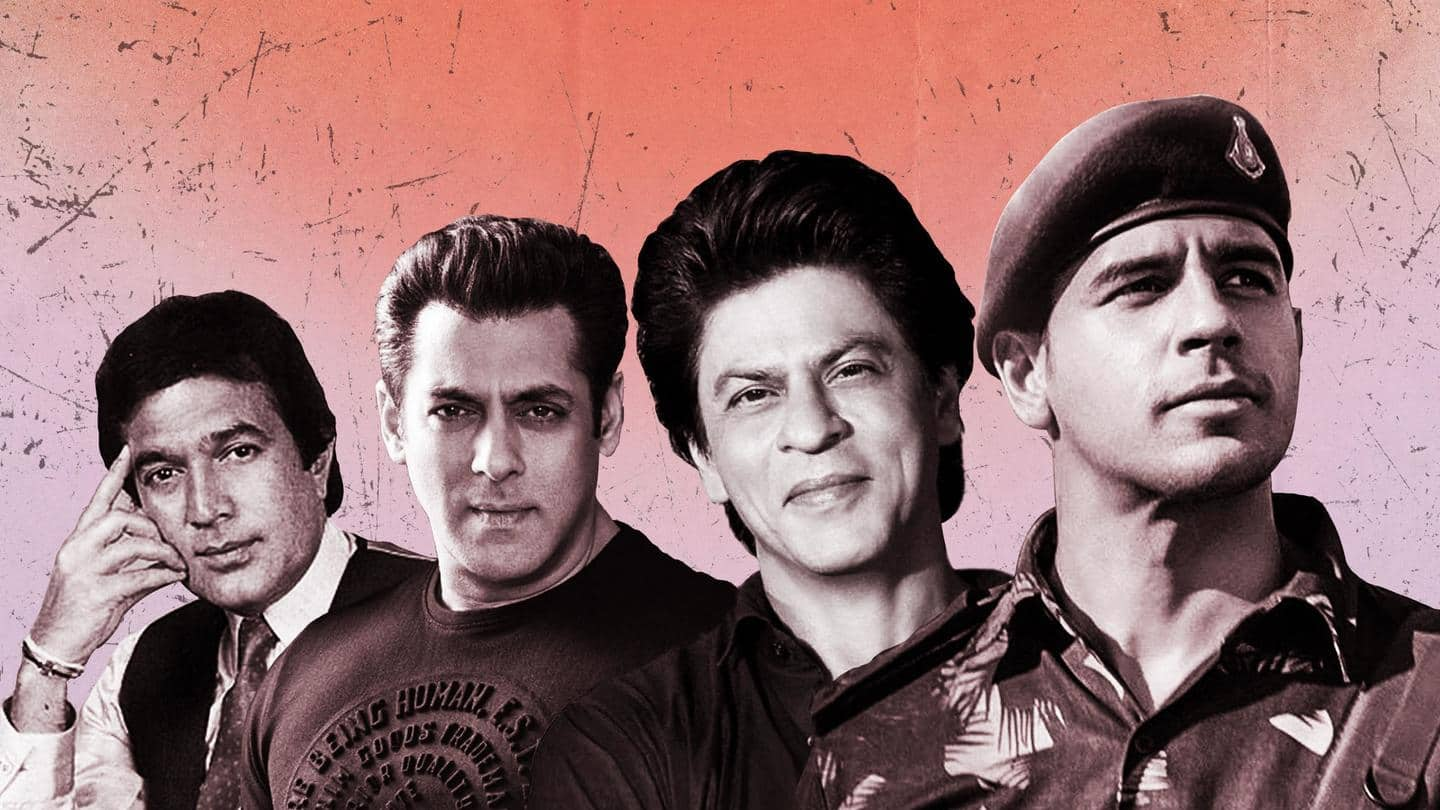
#IndependenceDaySpecial: Tracing Indian cinema's journey from monochromatic films to OTT
What's the story
The Hindi film industry, or Bollywood, is one of India's stanchions and comprises the country's staple diet along with cricket and politics.
The industry—in over a hundred years of its existence—has witnessed immense growth and carved its glorious history in glittering words.
Established in 1913, the fraternity is credited with churning out over a thousand films annually!
This Independence Day, let's trace Bollywood's journey.
#1
The inception: Beginning of Indian cinema
We rolled out our first film even before we clinched Independence!
Raja Harishchandra (1913), produced and directed by the legendary Dadasaheb Phalke, was India's first full-length feature film.
However, it was a silent movie.
The debut Hindi film to be adorned with sound was Alam Ara (1931).
These paved the way for multiple other monochromatic movies, such as C.I.D., Awaara, Pyaasa, and Boot Polish.
#2
The '70s and '80s: Emergence of India's first superstar
The '70s-'80s were a time when it was not uncommon for cinephiles to populate endless queues outside film theaters, the weather conditions notwithstanding.
This era saw it all: the advent of "India's first superstar" Rajesh Khanna, the angry-young-man image that defined Amitabh Bachchan, the family sagas that pivoted around retribution and justice, and some spine-chilling, crooked villains that are the stuff of legends today.
#3
The '90s: Romcoms, family sagas, and mad, frivolous fun!
The '90s were dominated by a cinematic cocktail: romance, heartbreak, morality vs villainy, filial piety, "brainless," and "leave-your-brain-outside" comedies, among many more!
Commanded by actors like Govinda, Akshay Kumar, Suniel Shetty, Anil Kapoor, and some others, it was privy to the arrival of evergreen successes like Laadla, Sooryavansham, Hum Saath-Saath Hain, Ghayal, Coolie No. 1, Raja Babu, and Hum Aapke Hain Koun..!
#4
The domination of Yash Raj Films and Dharma Productions
Yash Raj Films and Dharma Productions are two towering pillars of Hindi cinema.
Bollywood's "House of Love" YRF is behind immortal love ballads such as Dilwale Dulhania Le Jayenge, Mohabbatein, Veer Zara, and Silsila.
Dharma, on the other hand, is the second name of opulence, exemplified in films like Kal Ho Naa Ho, Kabhi Alvida Naa Kehna, and Ae Dil Hai Mushkil.
#5
The evolution, stardom of the Khans: Shah Rukh, Aamir, Salman
To talk about the unparalleled, spectacular history of Indian cinema and not mention the Khan trinity would be blasphemous.
Shah Rukh, Salman, and Aamir are three bonafide Hindi superstars, who have left an indelible, illustrious mark on Indian cinema.
The Khans also enjoy a cult-like following both on and off social media and hold the record for some of the most phenomenal blockbusters ever.
#6
The emergence of women leading and creating cinema
As times underwent a transformation and society gradually changed, it was difficult for cinema not to capture the essence of this "New India."
This birthed the rise of films planned, executed, penned, and directed by women, bringing a hitherto overlooked community to the center stage.
Some momentous examples include Bareilly Ki Barfi, Dear Zindagi, Raazi, A Death in the Gunj, and Ramprasad Ki Tehrvi.
#7
A new era ushered in by over-the-top streaming platforms
The meteoric rise of OTT platforms such as Netflix and Amazon Prime Video, among endless others, has posed an interesting problem: the paradox of choice, with a new project releasing every second day!
Understandably, numerous films and big banners now ditch the traditional theatrical route.
Some recent OTT films that emerged as bonafide successes include Darlings, Shershaah, Gehraiyaan, A Thursday, and Kaun Pravin Tambe?